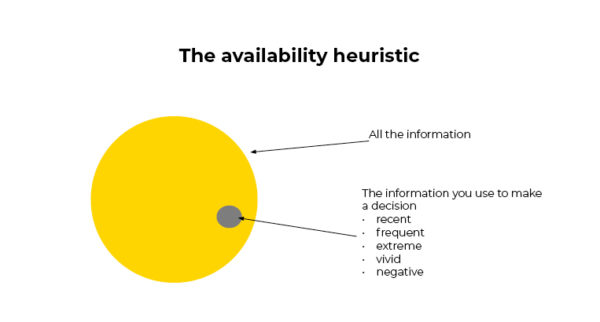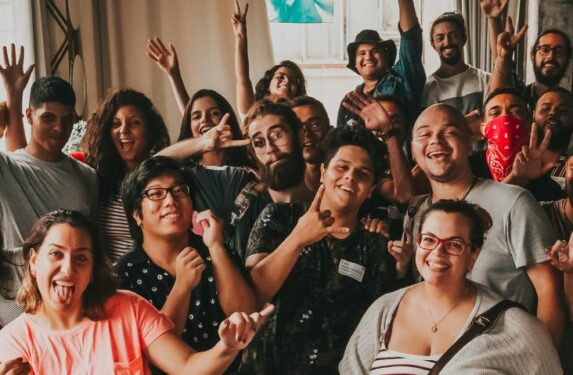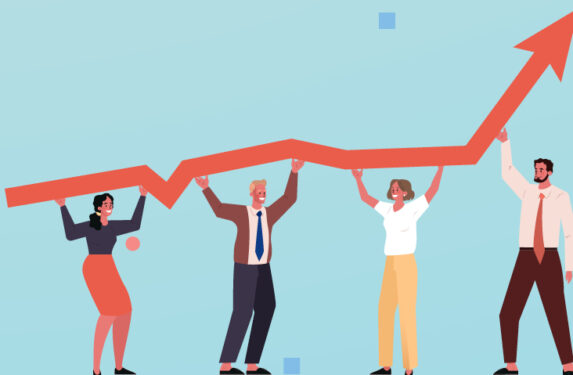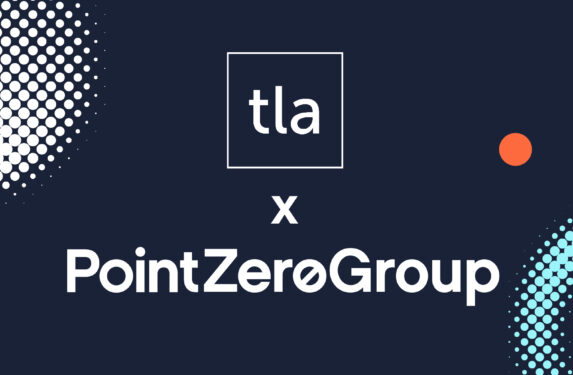Indulge me for a minute while we talk about heuristics (we’ll come on to hybrid working in a moment). For the newbies to this field, heuristics are the mental shortcuts our brain takes to allow us to make decisions and judgements quickly and efficiently. They evolved to ensure early humans took swift action to survive, stopping us from dithering about whether to have chicken or crocodile for dinner. In milliseconds, our brains would process the available data and remind our hungry ancestors that crocodiles are an absolute nightmare to kill and also a bit chewy.
Heuristics are what get us through the day without staring at the contents of our sock drawer all morning, so they’re pretty important for managers who have to make a hundred decisions every day. But they also depend on an element of cognitive bias to help us process our options quickly and filter out what matters. Memories, predispositions, experiences, prejudices – whether conscious or unconscious – speed up the process and get us to answers more quickly.
And what, you ask, does this have to do with working life in a (kind of) post-Covid world? Well, everything, as it happens. One type of heuristic is the availability heuristic, which prompts us to use information that easily comes to mind in making decisions. Things we read about on social media, things that happened to a family member or a colleague, things that we have direct experience of – all of these have a significant (and often disproportionate) impact on our own decision-making.
The issue we’ve been talking about at BrandPointZero as part of our Next Gen Employer Thinking series is the imbalance that will occur when some people are in the office more than others. What are the impacts that will be felt as a result of hybrid working? We all have a story to tell about a former colleague who was always hanging out with senior management in the smoking area, or played 5-a-side with the boss. Usually the story ends with them getting promoted way quicker than their peers. Why? Because they got themselves noticed, ensured they were remembered, and then provided an (often unconscious) heuristic shortcut to a promotion decision that needed to be made.
Of course this is nothing new, and furthering your interests in the workplace by forging personal relationships is hardly a crime. But hybrid working creates a fundamental imbalance that benefits those who are in the office more often and can use their physical presence to their career advantage. Everyone else risks being faceless and forgotten, and has to work FAR harder to remain front of mind when big decisions are being made.
So how do you fix it? Firstly, managers need to acknowledge this cognitive bias and, if necessary, undertake unconscious bias training to understand it. Lots of training organisations offer this (some better than others, so do your research), and it’s essential for addressing the whole spectrum of equality and diversity issues encountered in the workplace. Saying ‘yeah, but I definitely wouldn’t do that,’ isn’t enough – your brain is wired to do it automatically, and overcoming it requires conscious effort.
Secondly, organisations need to put processes in place that ensure all staff are giving the same opportunities, regardless of how physically present they are. Not making it part of your employee inclusion strategy risks passing over outstanding talent because of a neural decision-making system that evolved to make sure you took action to hunt down that tasty chicken before it ran away. It’s a new branch of equal opportunities thinking, but one we all need to address if we’re going to help employees and businesses thrive in a hybrid working world.
If this resonates with you and your organisation, get in touch. We’d love to hear your challenges… or just generally put the world to rights.




